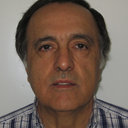Glial expression of cannabinoid CB(2) receptors and fatty acid amide hydrolase are beta amyloid-linked events in Down's syndrome.
Klíčová slova
Abstraktní
Recent data suggest that the endocannabinoid system (ECS) may be involved in the glial response in different types of brain injury. Both acute and chronic insults seem to trigger a shift in the pattern of expression of some elements of this system from neuronal to glial. Specifically, data obtained in human brain tissue sections from Alzheimer's disease patients showed that the expression of cannabinoid receptors of the CB(2) type is induced in activated microglial cells while fatty acid amide hydrolase (FAAH) expression is increased in reactive astrocytes. The present study was designed to determine the time-course of the shift from neuronal to glial induction in the expression of these proteins in Down's syndrome, sometimes referred to as a human model of Alzheimer-like beta-amyloid (Abeta) deposition. Here we present immunohistochemical evidence that both CB(2) receptors and FAAH enzyme are induced in Abeta plaque-associated microglia and astroglia, respectively, in Down's syndrome. These results suggest that the induction of these elements of the ECS contributes to, or is a result of, amyloid deposition and subsequent plaque formation. In addition, they confirm a striking differential pattern of distribution of FAAH and CB(2) receptors.


